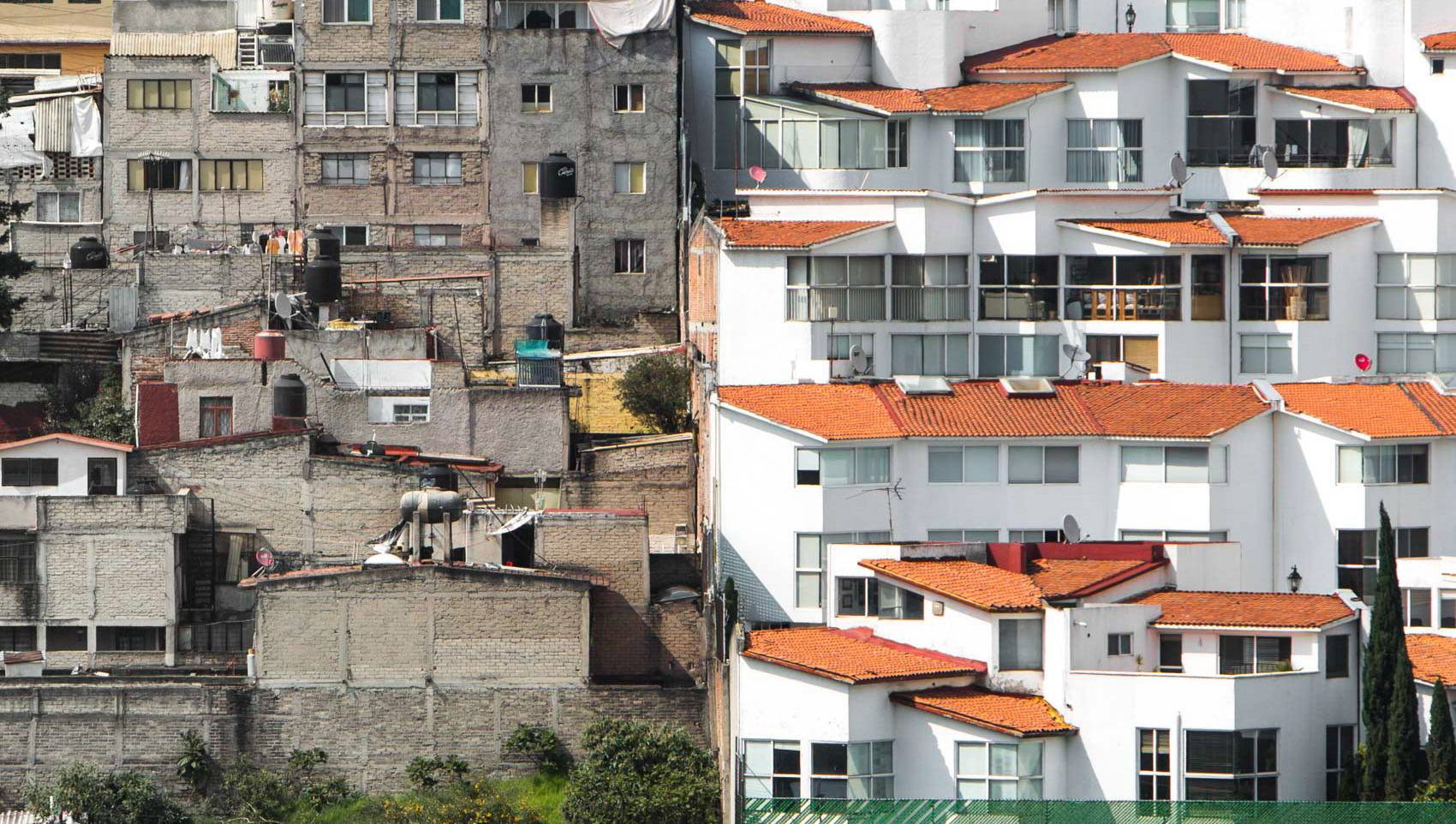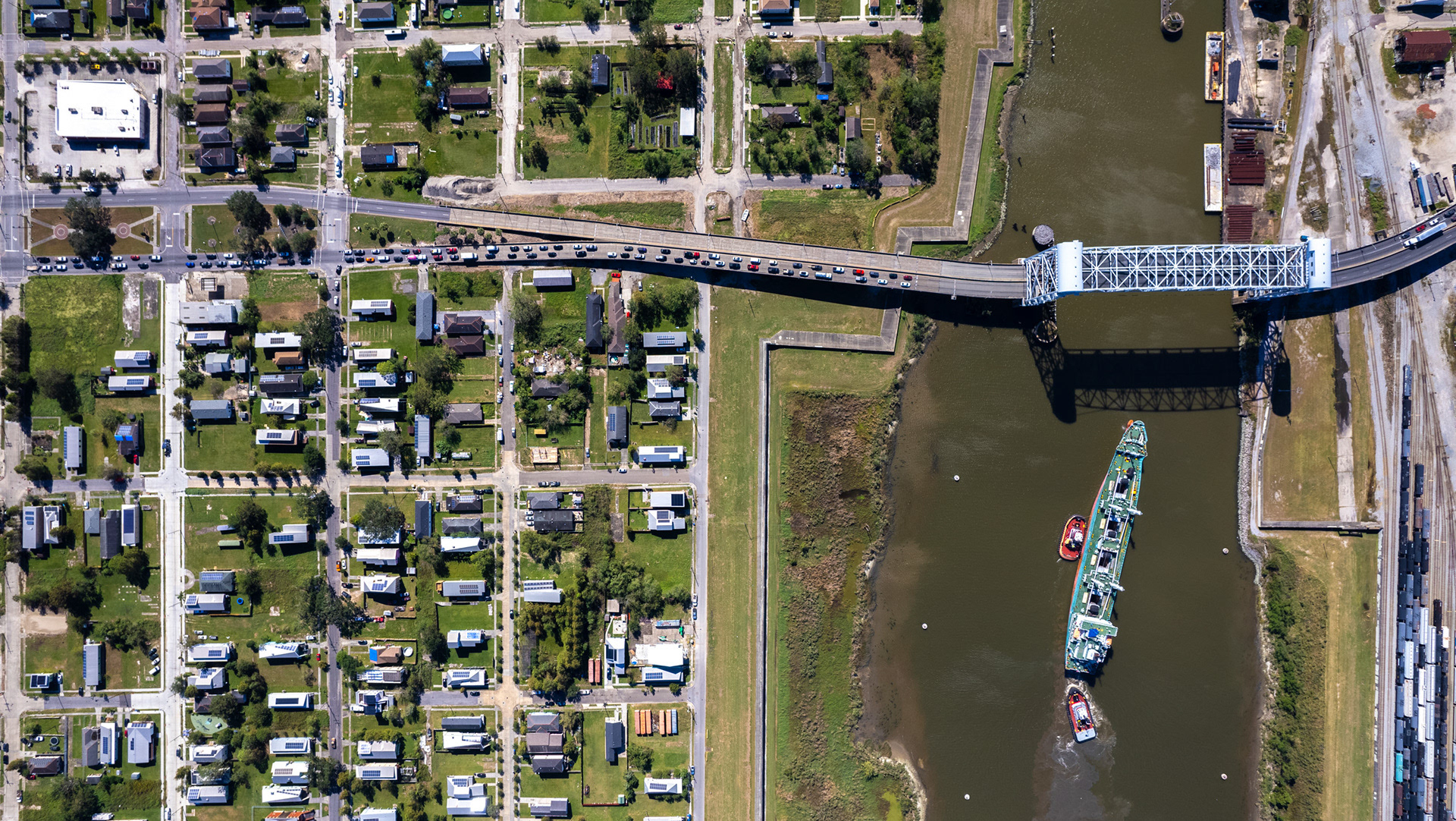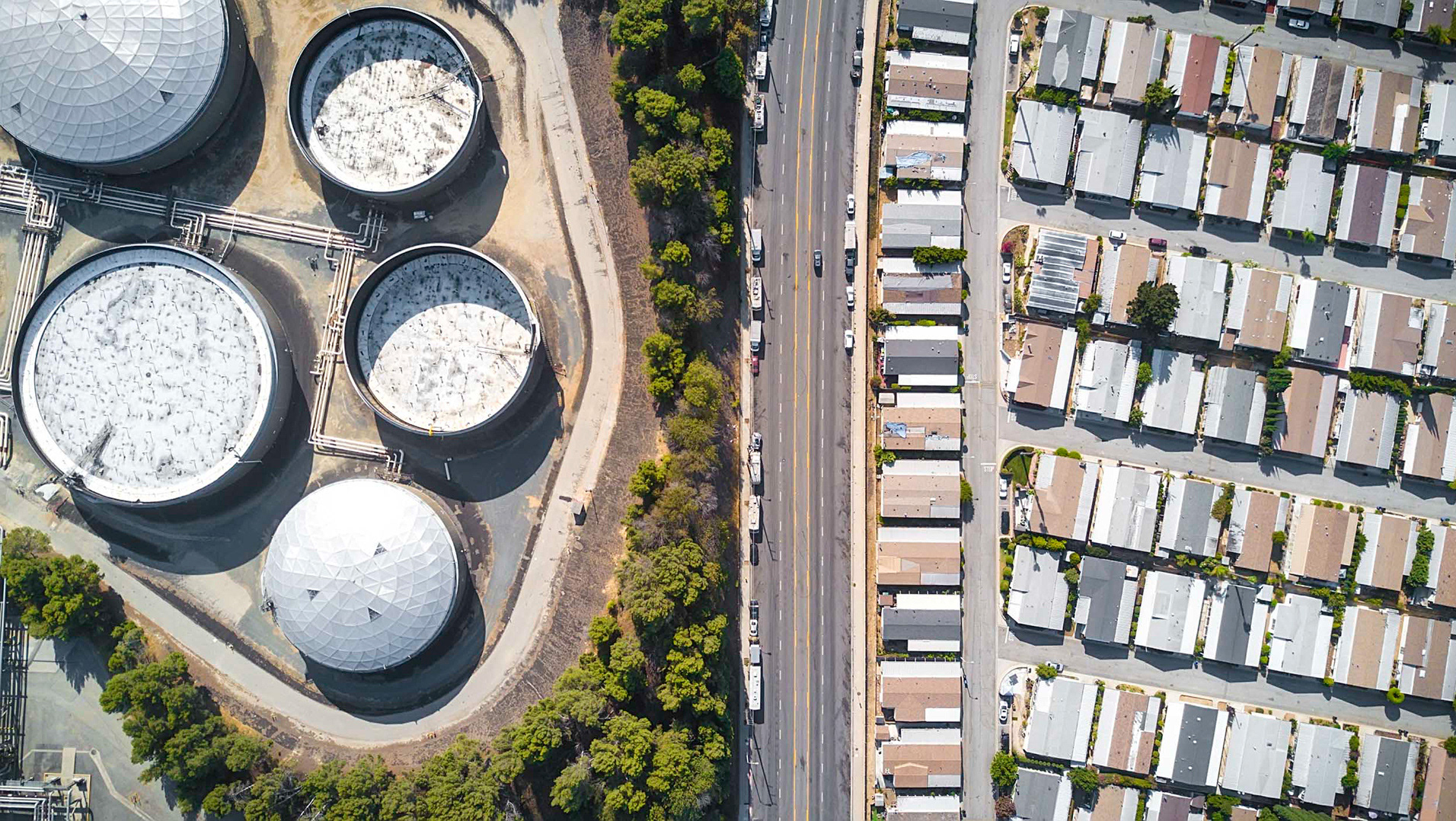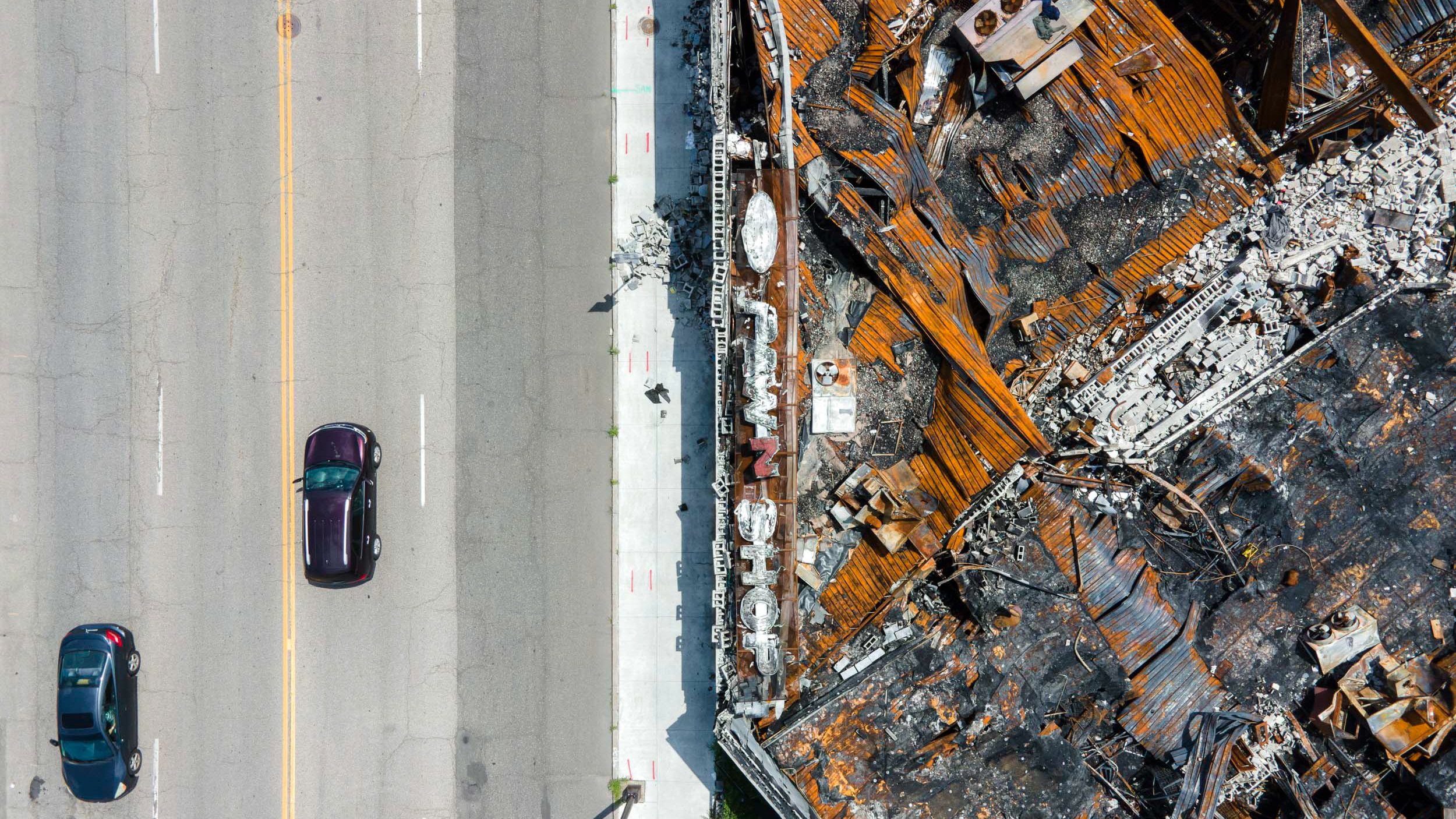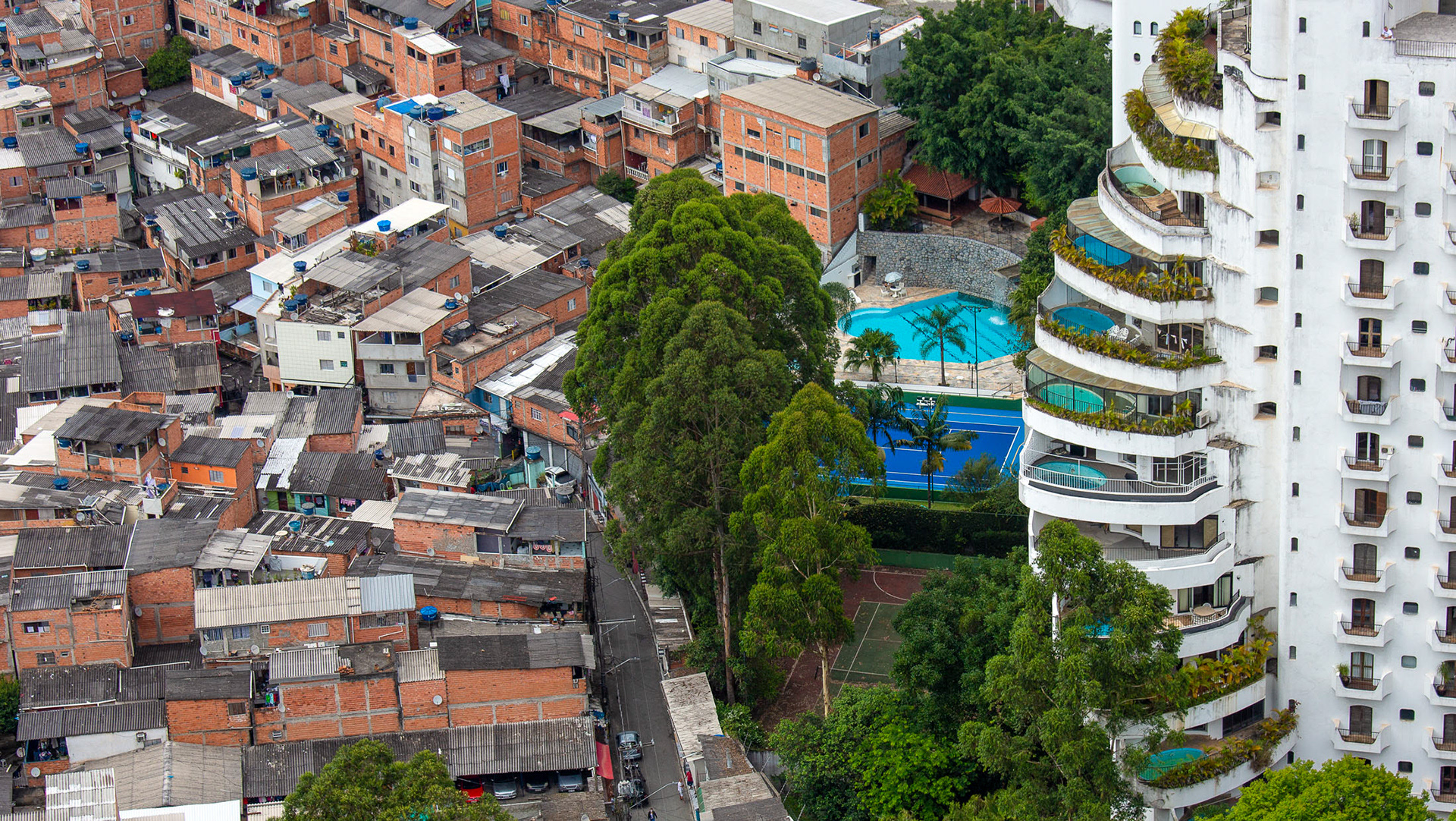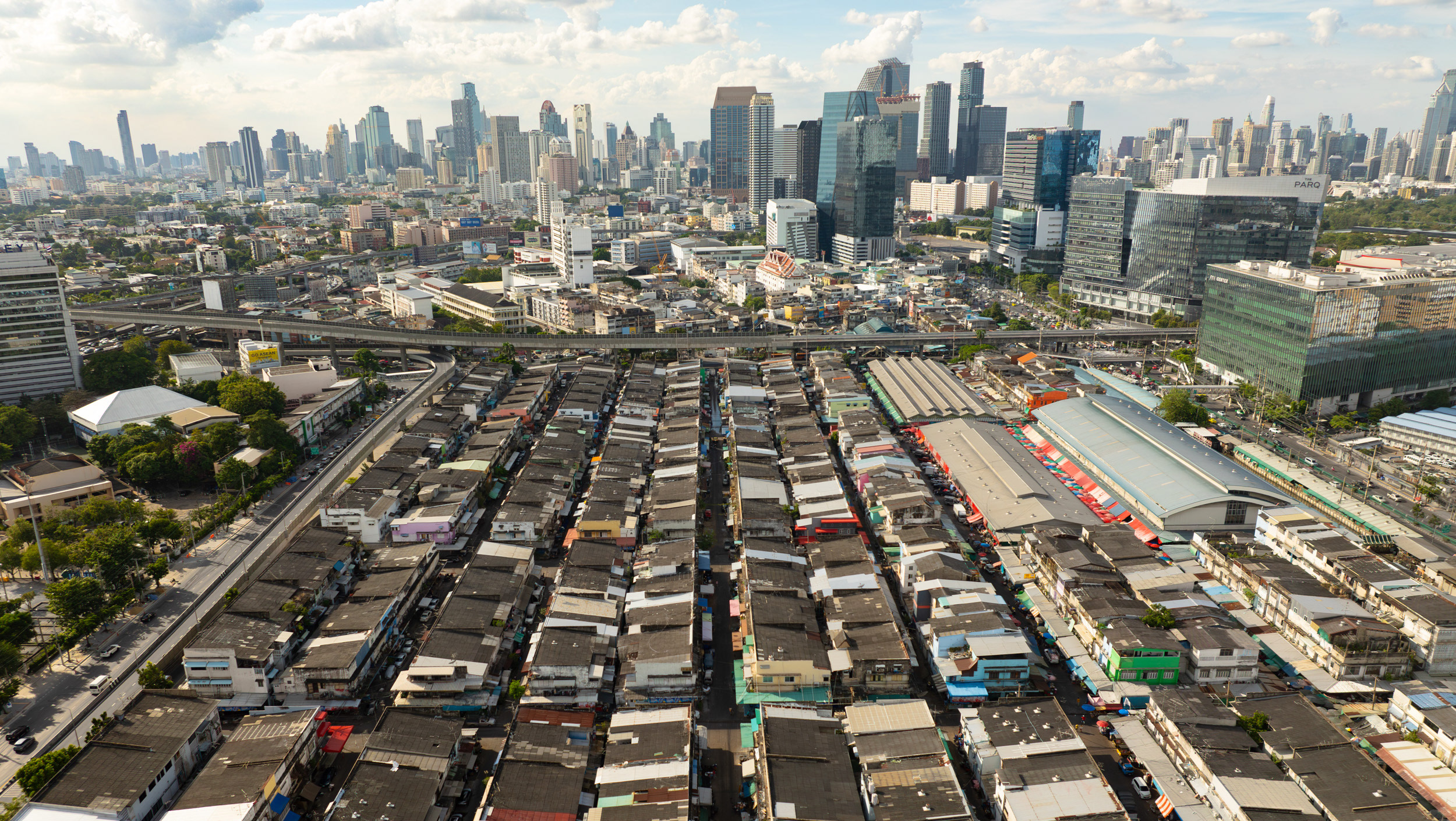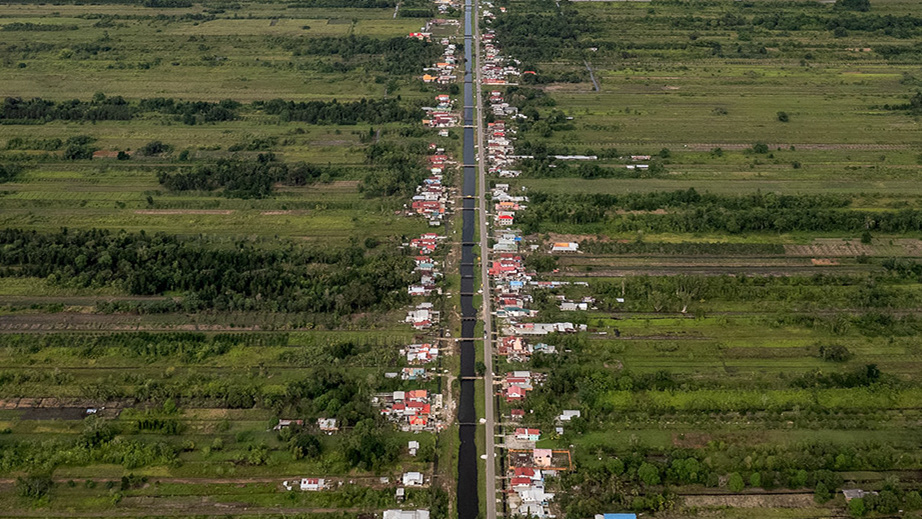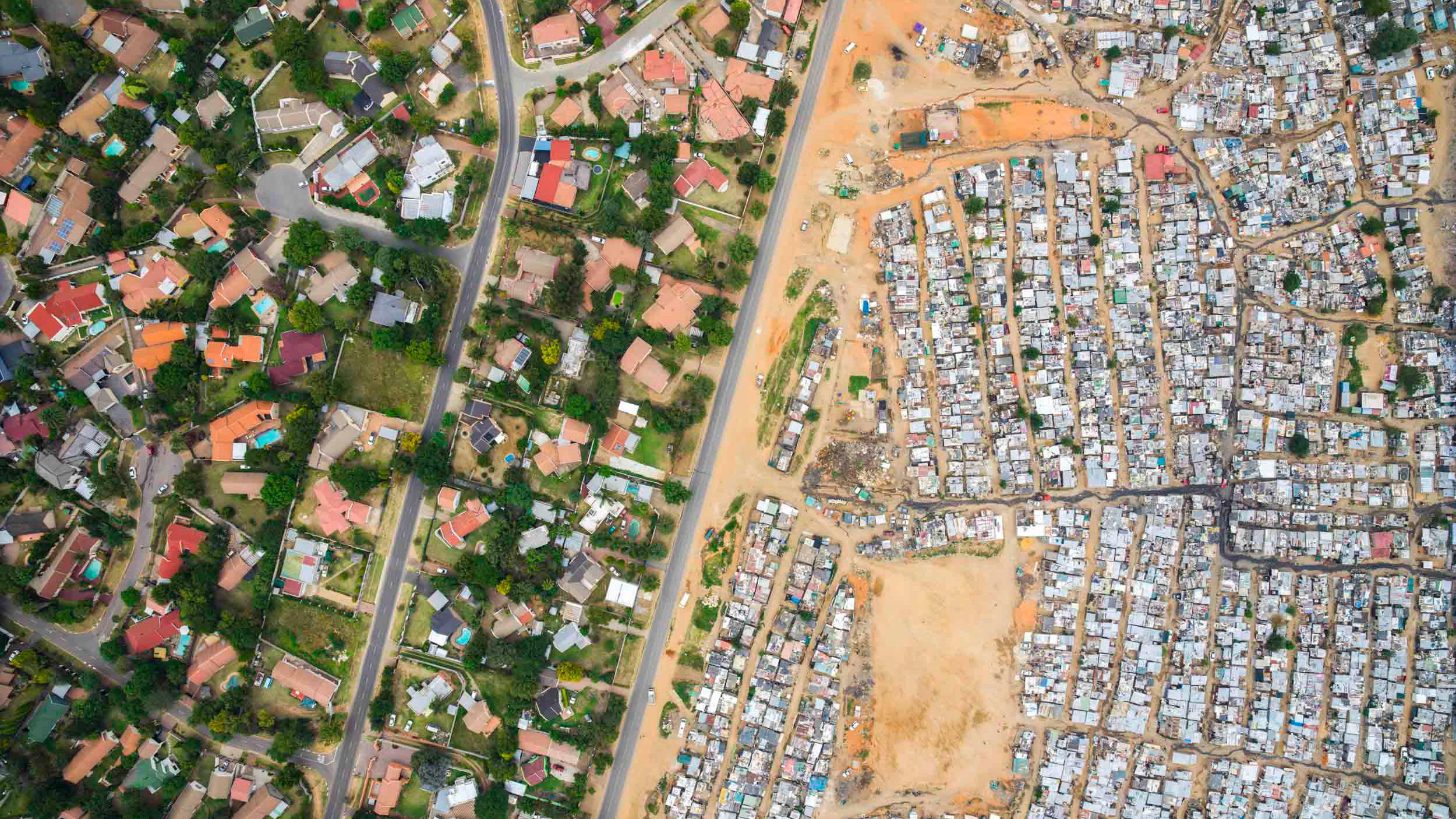The abandoned Lee Plaza, an Art Deco icon built in 1929 as an upscale residential building.
Some neighborhoods, like this one near Highland Park, are totally decimated by the flight from the city during a long period of decline.
Woodward Avenue is a major north-south route in Detroit, and the very first paved road in America. In certain areas, like this one near Highland Park, it's easy to see which neighborhoods are suffering under Detroit's decline.
(Above) Grosse Point Park is one of the wealthiest neighborhoods in Detroit, but it's not technically within the city's boundaries. The Fox Canal separates it from the now-sparsely populated Jefferson Chalmers neighborhood.
Kercheval Avenue is the main entryway into Grosse Pointe Park, leading directly to downtown Detroit.
The residents of Grosse Pointe Park have tried for years to barricade this gateway, including using snow, oversized planters, sheds (seen in center right in this photo). After intense disputes, the barriers were removed, but a "traffic calming" roundabout is still in place.
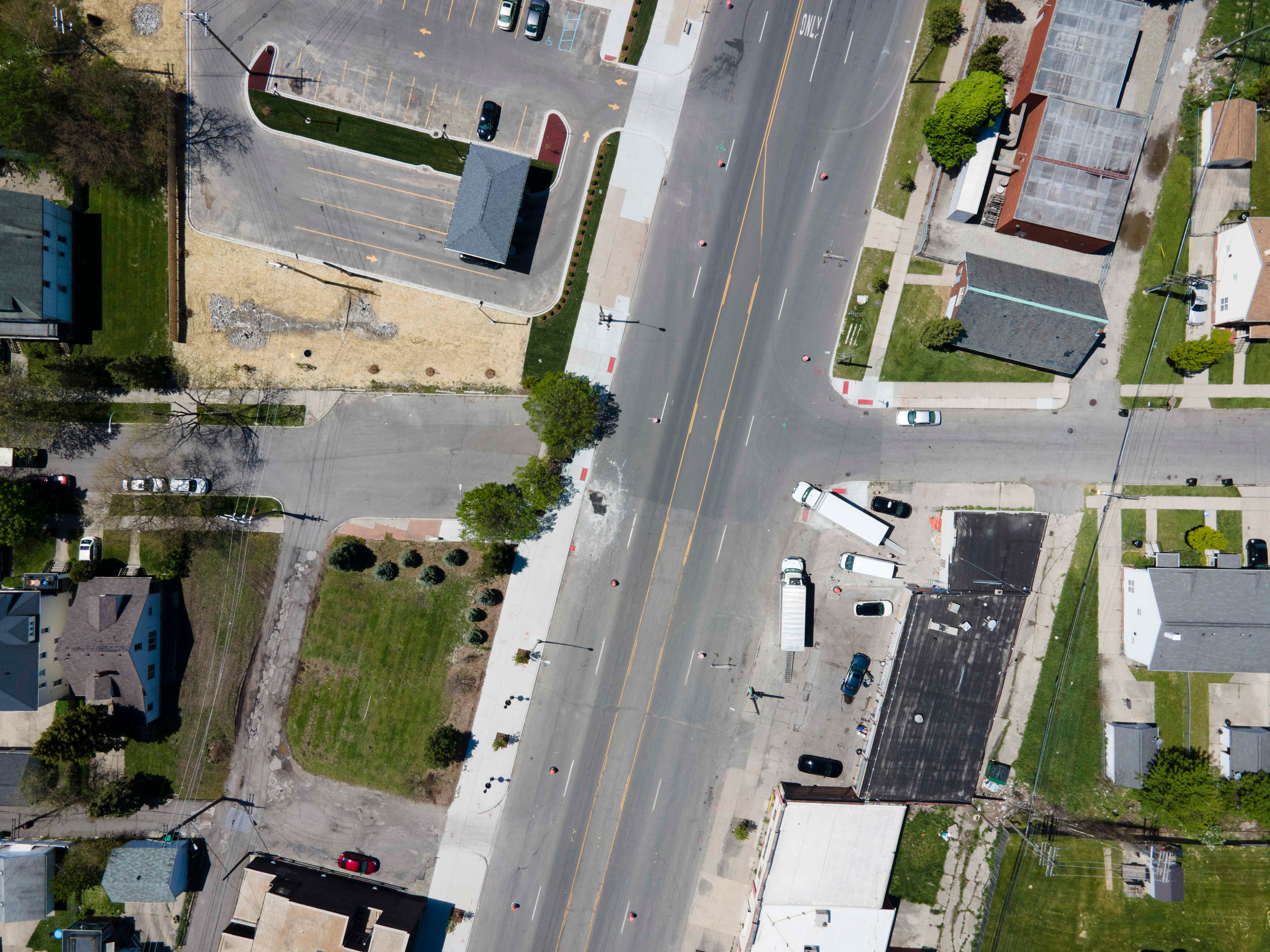
Mack Ave and Wayburn St.
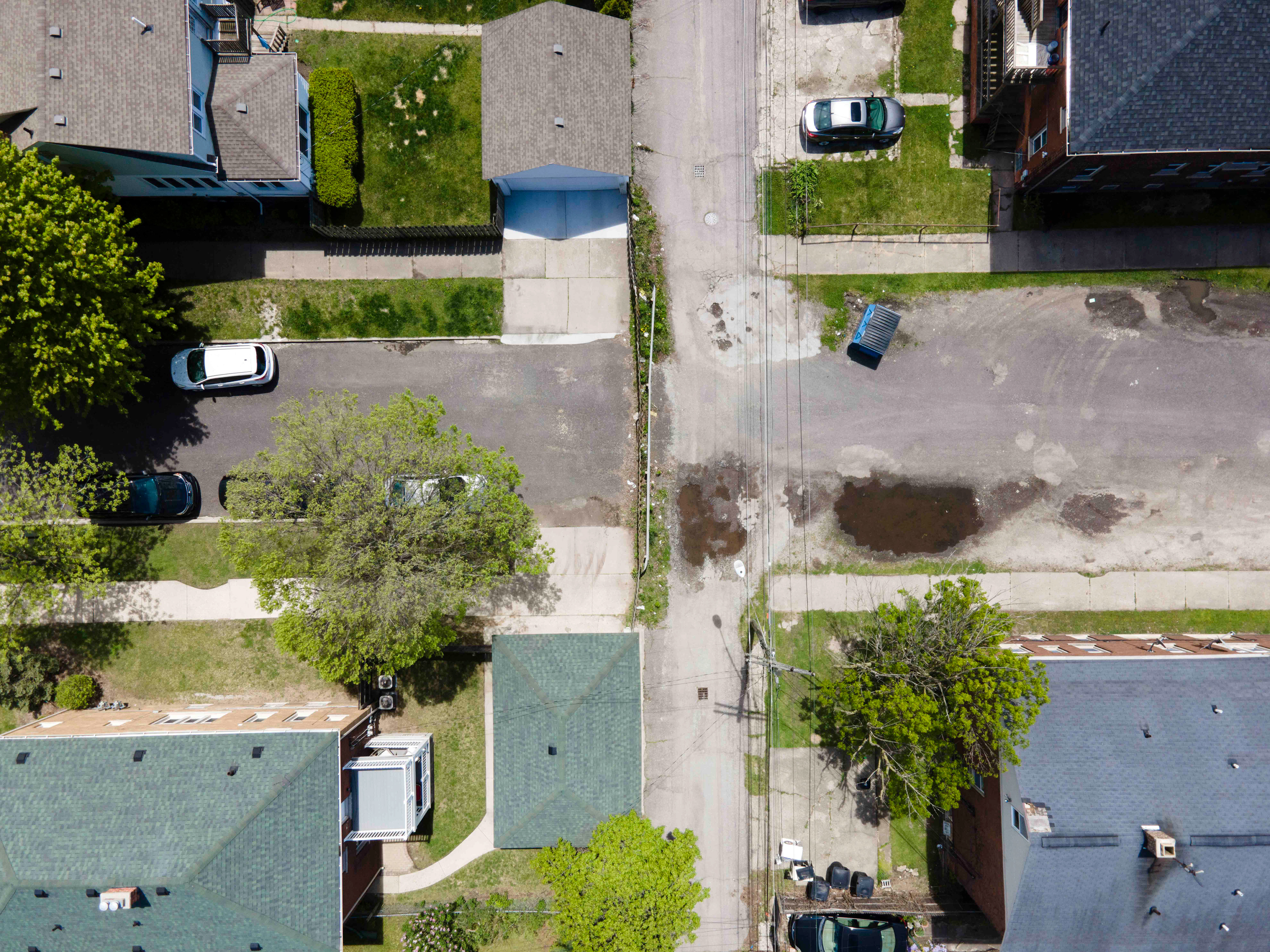
Brooks St. / St Paul St.
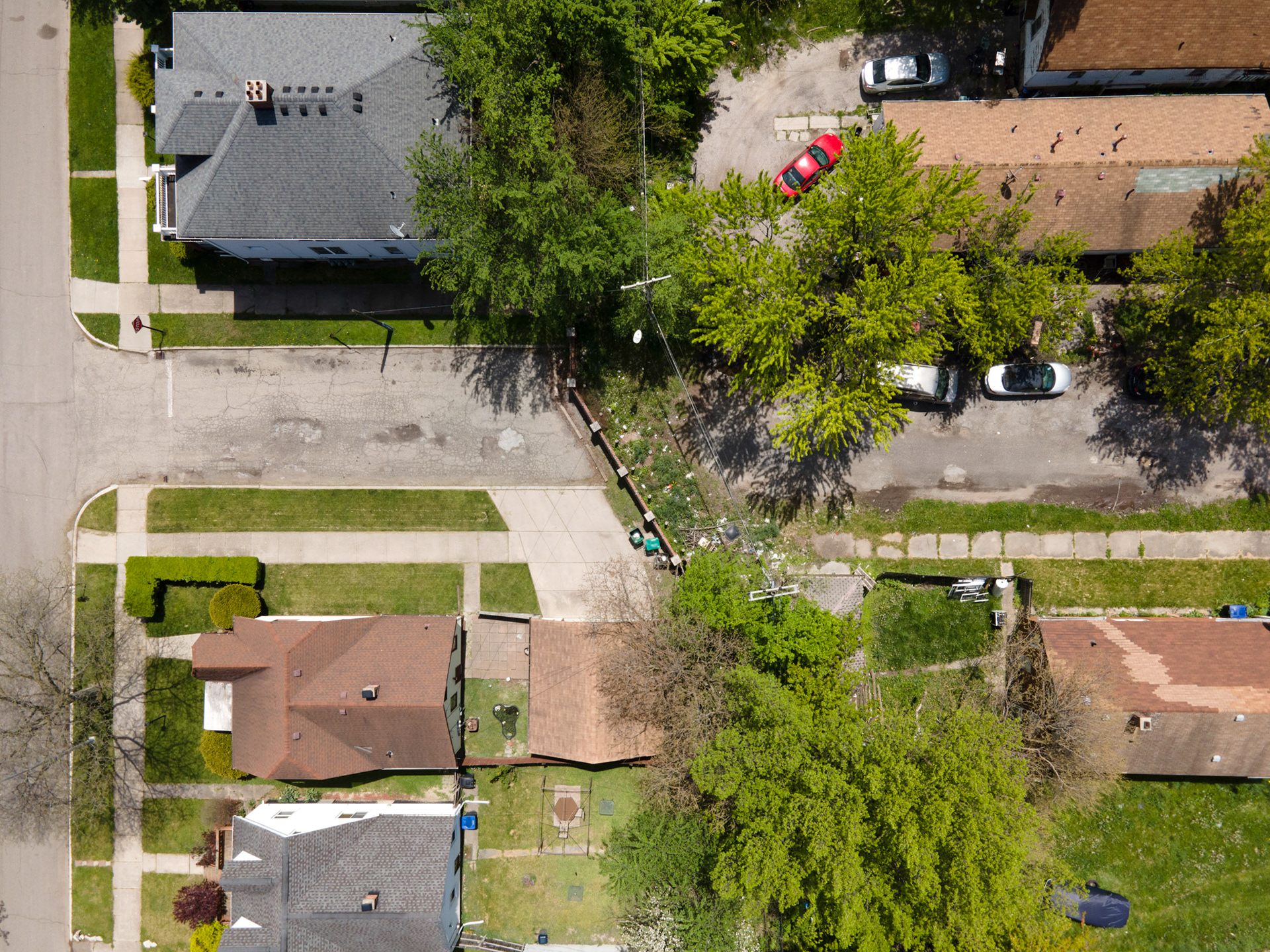
Goethe St. / Goethe Ave.
These walled-off streets, like Goethe Ave in Grosse Point Park, once connected the community to Detroit (on the opposite side).
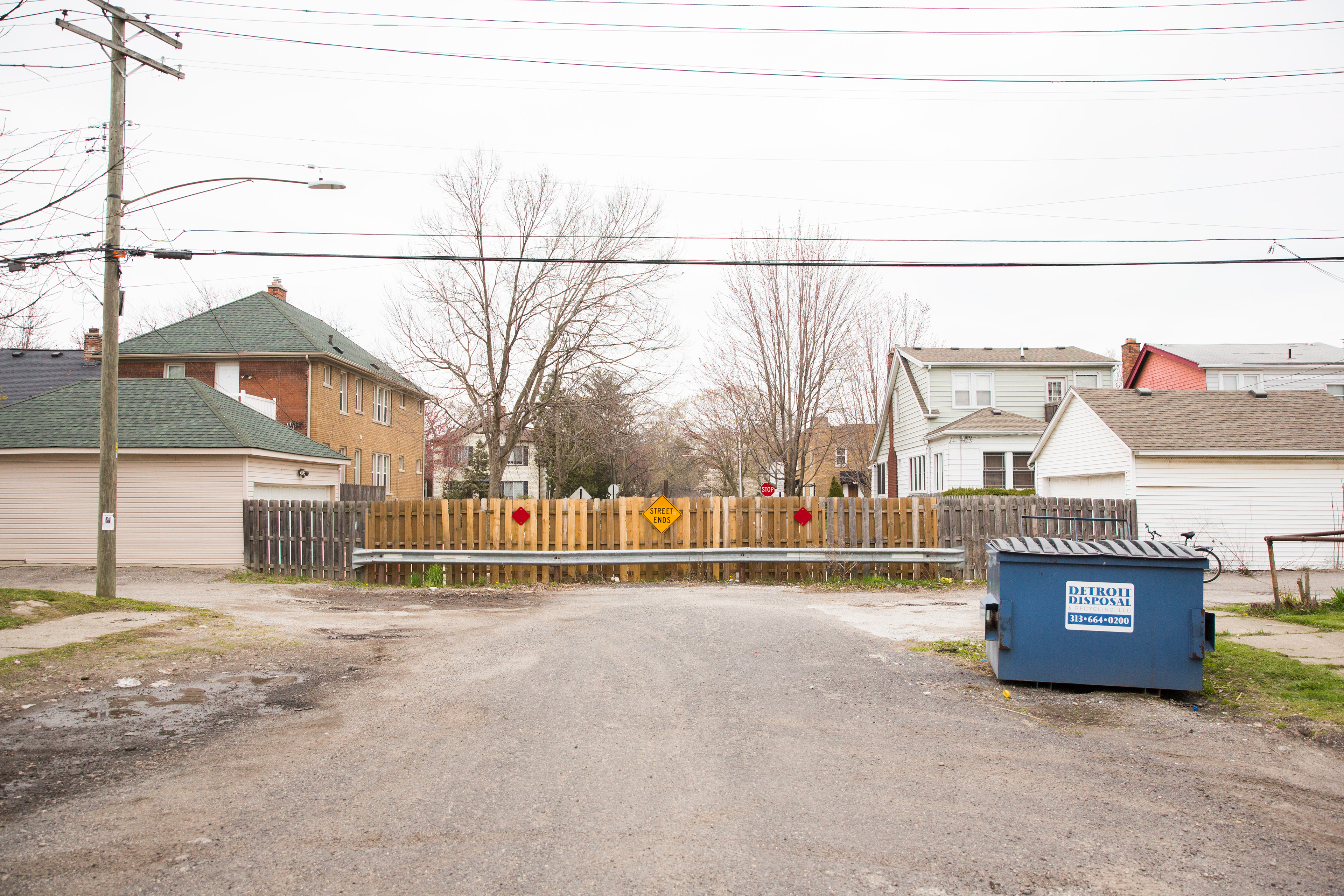
Brooks Rd. (as seen from Detroit)
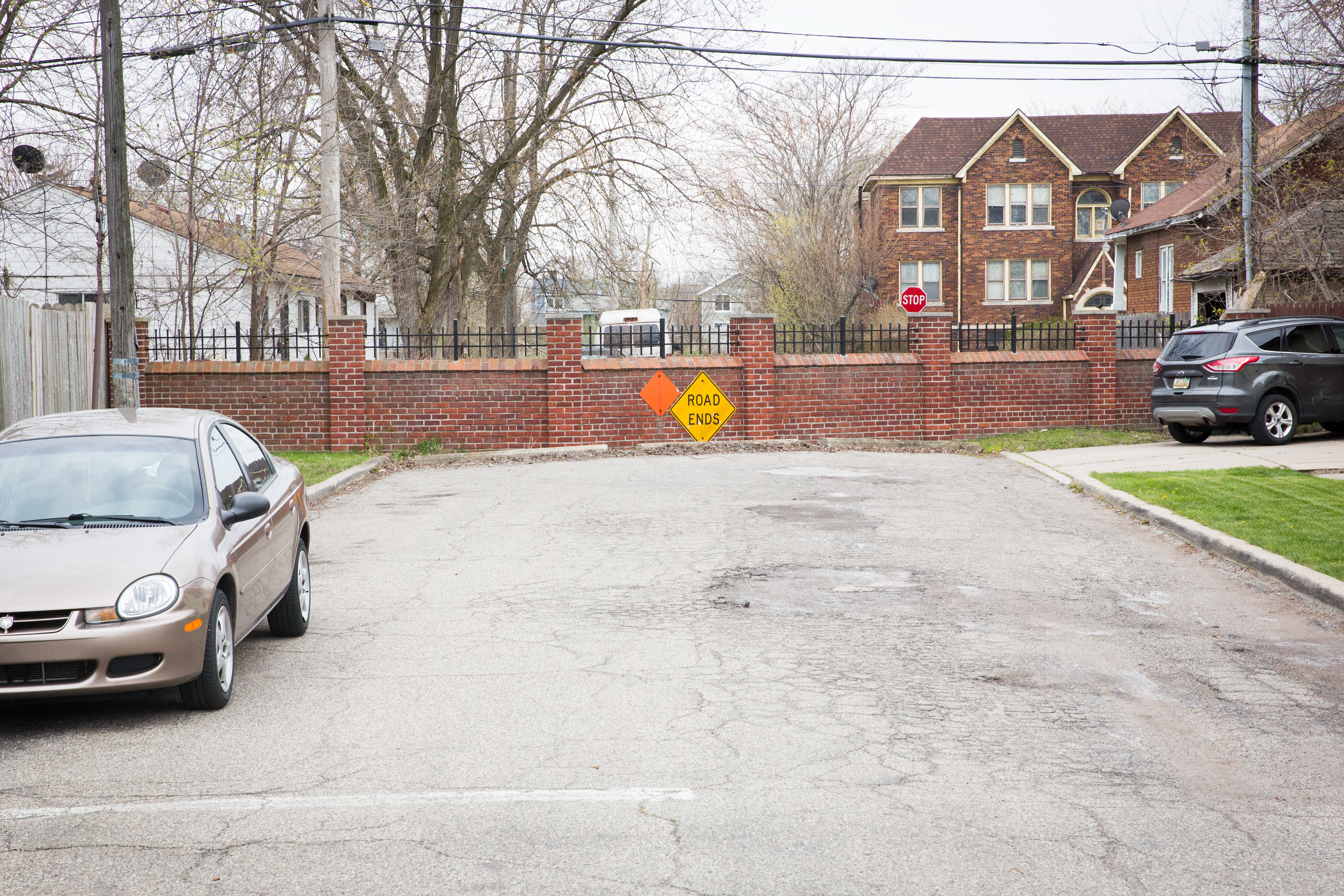
Goethe Ave (as seen from Grosse Pointe Park)
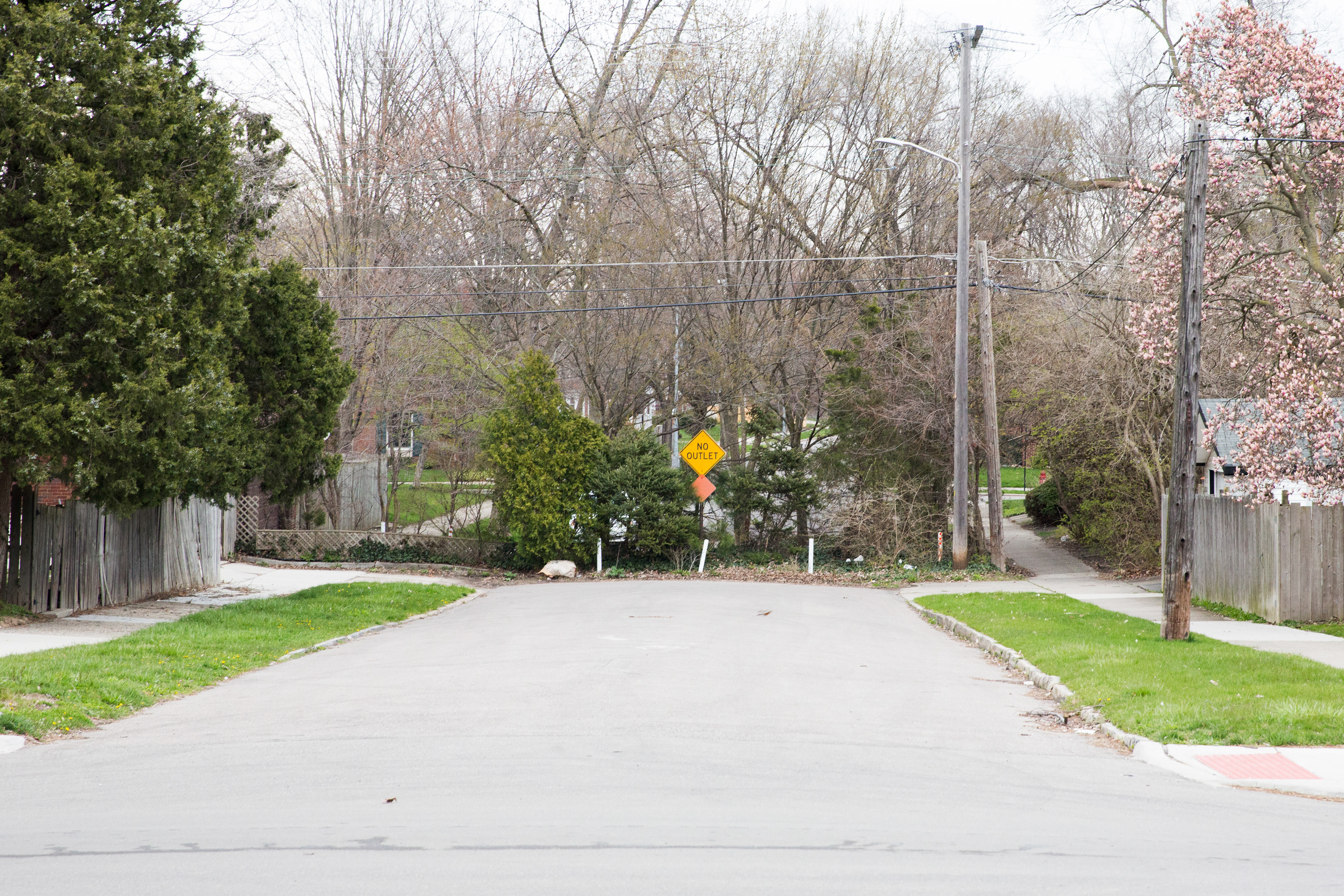
Korte Ave (as seen from Detroit)
The end of Fox Canal, looking towards the Detroit River. On the left is the private beach accessible only through Grosse Pointe Park. On the right, Mariner's Park, open to all.
(Above) The Wall, a concrete barrier in 8 Mile, Detroit, built to divide black and white neighborhoods.
(Below) The area now is almost all black, and the wall is seen as a monument to a failed policy of segregation.
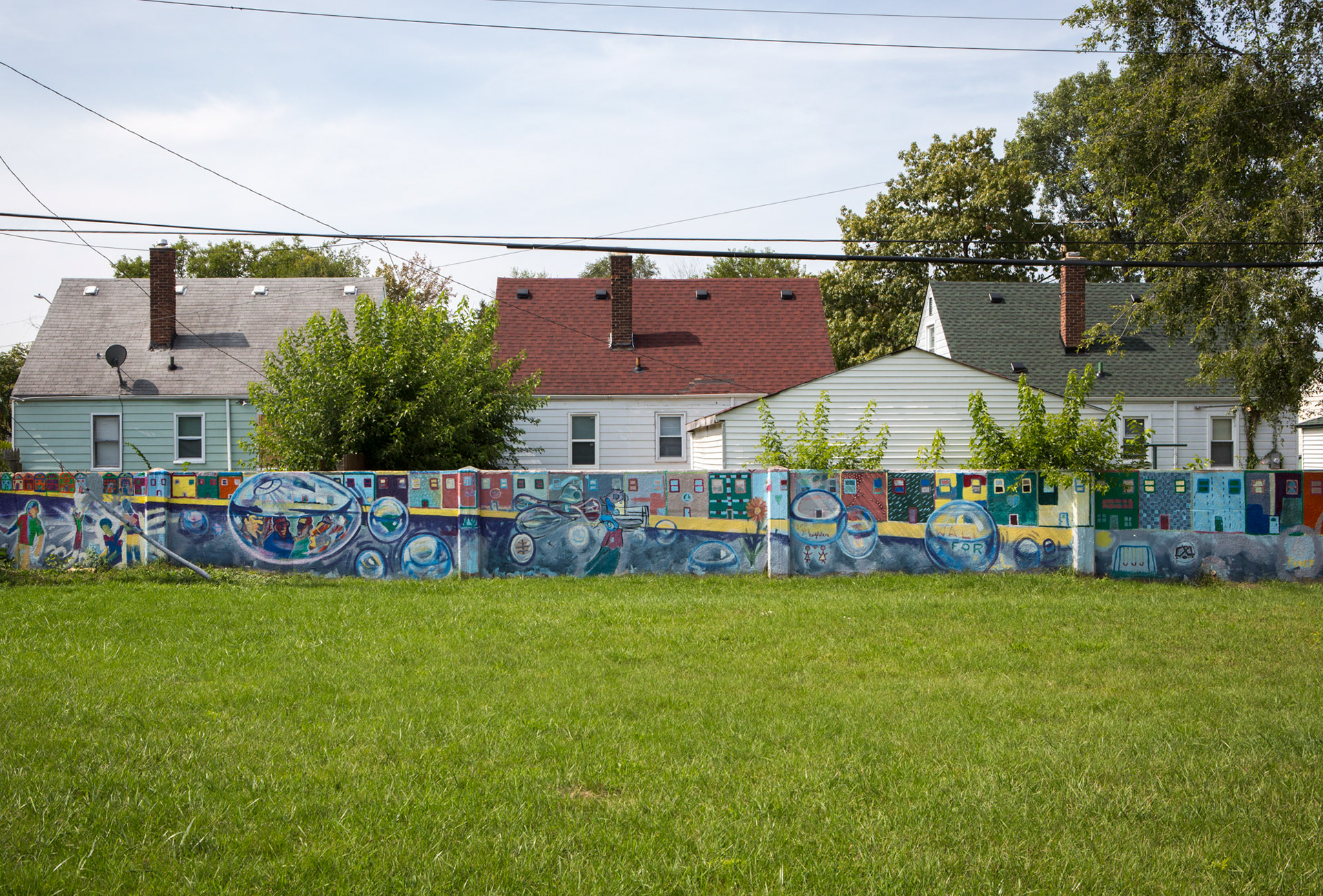
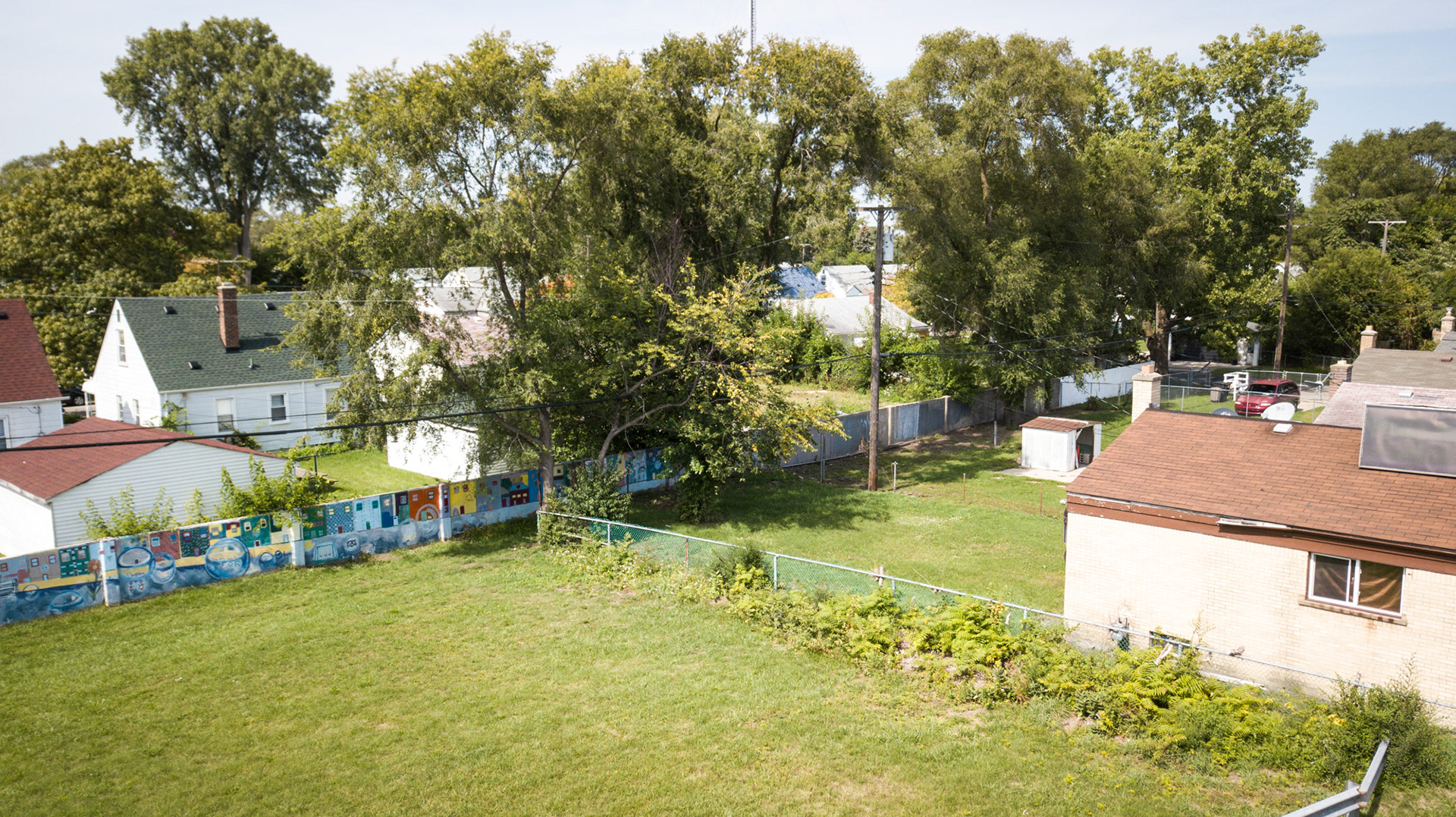
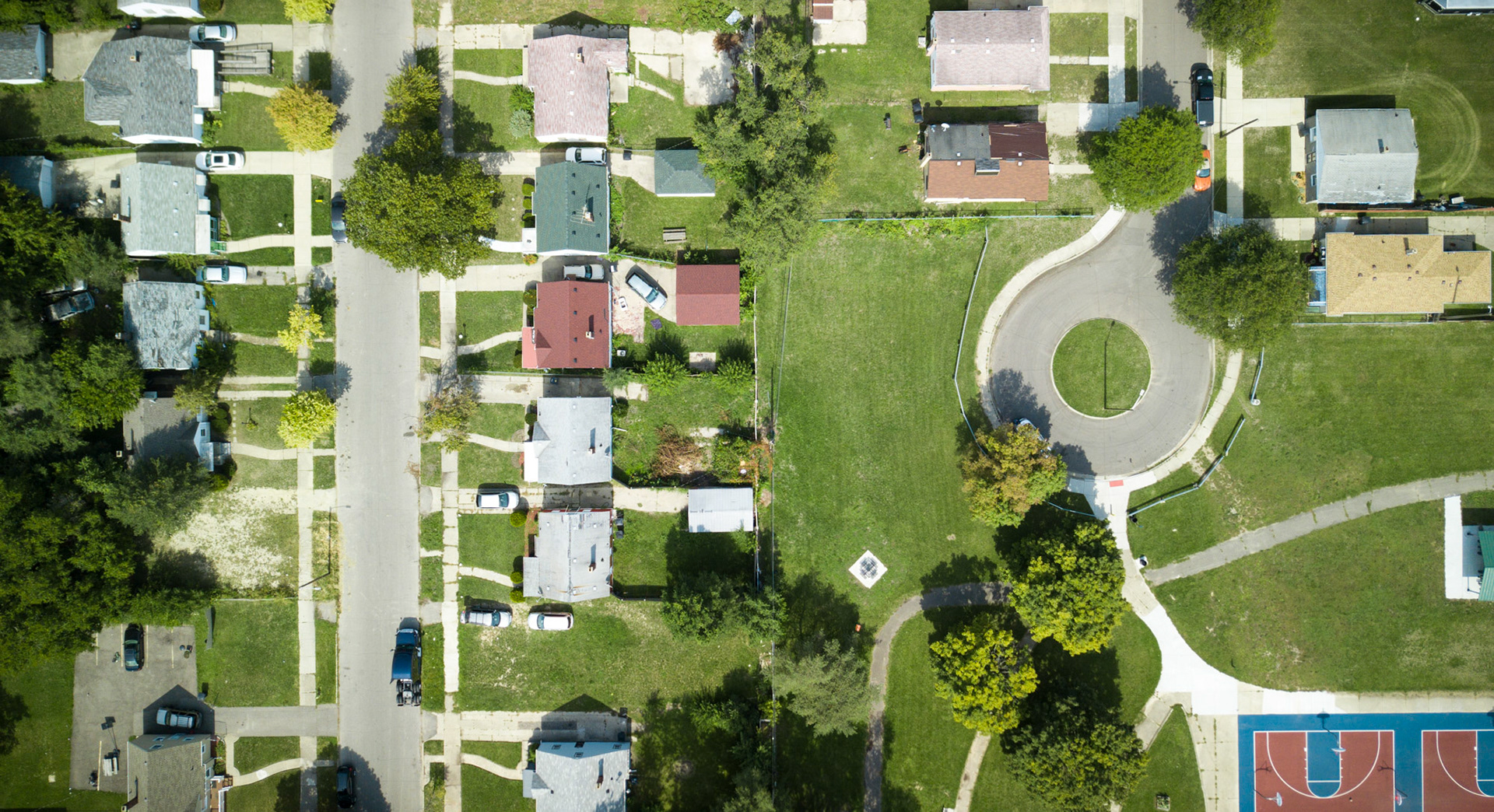
(Above) Black Bottom used to be a vibrant African-American neighborhood, but that was before redlining, the construction of I-75, and decades of neglect decimated the area. Now it is like so many other parts of Detroit - a skeleton of cracked concrete, weeds, and emptiness.
The original HOLC (Home Owner's Loan Corporation) redlining map of Detroit. Black Bottom is in the red zone, just northeast of downtown. (Note: Grosse Pointe is the green area in the far east of this image.)
A series of aerial images I compiled from Wayne State University (possibly for the first time), showing the extent of the interstate construction in 1961. The construction of I-75/I-375 through Black Bottom is clearly visible to the northeast of downtown.
The I-75/I-375 interchange sits where Black Bottom used to be. Large areas surrounding the road, which used to house thousands of black families, are now empty fields.
A colorful mural stands at the site of the 1967 Detroit riot, alongside a road now known as Rosa Parks boulevard. “Murals in the community provide a perfect platform to welcome new and returning Detroit families to the city" writes Hubert Massey, the artist, "and to expose them to more than 50 years of history."
The Highland Park Ford Plant (which the land on the left is part of) was the world's first automobile plant to use a mechanical assembly line, and produced the Ford Model T from 1913 to the late 1920s. Now it's a partially an industrial park, partially a wasteland.
Flint, Michigan was once a booming auto town. The Buick City factory, now gone, employed more than 30,000 at its peak.
The former Malleable Iron Plant in Saginaw, which operated for close to 100 years, is now slated to become a county park.
Mismanaged maintenance, coupled with a flood, destroyed two dams in central Michigan in 2020.
When the Edenville and Sanford dams burst, the floods followed familiar lines—devastating poorer, rural communities left unprotected by decades of neglect and unequal infrastructure investment.
Jefferson Chalmers, while billing itself "one of the safest neighborhoods in Detroit", still struggles with blight, including this closed elementary school just blocks from Alter Road.

